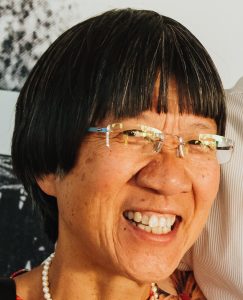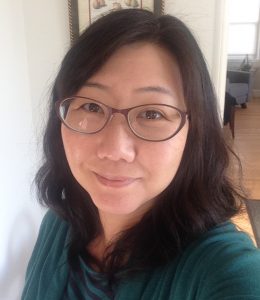Pre and Post Event Dialogue – Using Children’s Literature to Provoke Conversations
PREFACE:
Education by itself cannot eliminate prejudice or injustice. If you observe children at play, they quickly reveal many of their stereotypes. “Old people are weak” “He’s in a wheelchair, he can’t play with us.” “She’s wearing a black scarf, she must be ninja” “She can’t be a doctor, she’s a girl.”
But schools and families together can help develop proud and powerful children. As you choose books, or critically examine your current book selection, always keep in mind the power of books—their words and their images—to nurture or, conversely, to undermine a child’s sense of self, positive attitude toward others, and motivation to act for fairness.
A child’s foundation for respecting and valuing differences beyond their own families and communities starts with you!
USING CHILDREN’S LITERATURE TO PROVOKE CONVERSATIONS ON CHALLENGING TOPICS
Debbie LeeKeenan, Dr. Caryn Park and Dr. Maggie Beneke
Activist and author, Louise Derman-Sparks once famously said “Doing anti-bias curriculum is a way of life.” And she’s right! Learning about and acting on diversity and equity shouldn’t stop after one 2-hour session, but should permeate everything that we do.
As we begin a new school year, we will inevitably interact with children who ask questions or share comments regarding challenging topics. These comments cause us to pause and to think. These moments, these “teachable moments,” are a way to actively address issues of diversity and equity in the classroom and at home. But far too often, we drop the ball and miss our opportunity to deepen the child’s awareness and understanding of bias.
The process of doing anti-bias work with children, parents, and ourselves is an ongoing one. It is a continuous opportunity to equip children to interact effectively with many different people in the world, an opportunity for educators to continue their own personal growth, and an opportunity for parents to nurture the positive development of children’s identities and attitudes towards the people around them.
While we may all believe in the value of human diversity and that the fair treatment of all people is a prerequisite for this type of work, the process isn’t always as black and white. Children’s ideas about diversity are sometimes clouded by misinformation and discomfort. As educators, we must be vigilant and observant for these responses and signs, taking a critical look at everything from the materials in our classroom, to the classroom environment itself, and to the activities we engage our children with in order to eliminate stereotypical messaging. Teaching our children about diversity is a long and difficult task, but a conscious effort is far better than the harm caused by inadvertent reinforcement of messages of racism and colonialism.
So the question is…
When have you made changes to your classroom (including environmental choices, material offerings, or activity plans) as a result of children’s questions or comments about issues of bias related to gender, ability, race, or other elements of human diversity?
In the spirit of dialogue, and practicing the Reggio Emilia value of “learning in relationship,” we invite you to delve into deeper thinking and conversation about this event by sharing your thoughts, questions, or comments below!
Last Wednesday, we embarked on a journey to support children to view human difference as our strength. Beginning our year-long initiative of encouraging educators and children to challenge bias, rather than internalizing it, we learned how to use the power of pictures, illustrations, films, and literature to learn about, and rejoice in who we are as a diverse community.
Cooperative learning is one of the most powerful methods for developing anti-bias awareness and knowledge. But education by itself cannot eliminate prejudice or injustice. As parents and educators, we need the diverse perspectives and honest feedback of peers to develop new insights and teaching practices. By partnering together, schools and families can help develop proud and powerful children so that together we can all create a more just society.
Observation is key. By observing children, we can begin to understand some of the misconceptions / stereotypes they have collected, and find ways we can incorporate literature, experiences, or conversations that will help combat bias . As you choose books, or critically examine your current book selection, always keep in mind the power of books—their words and their images—to nurture or, conversely, to undermine a child’s sense of self, positive attitude toward others, and motivation to act for fairness.
Children’s books have the ability to reflect positive attitudes about diversity, illustrate power relationships among different groups of people, and offer a window into the experiences of people with a range of social identities (e.g., racial, ethnic, gender, economic class, sexual orientation, and disability). While these conversations are sometimes difficult, children’s books can make it much easier to start introducing and exploring diversity. But as Debbie alluded to, some “diverse” children’s books are, well… not so great. But in the hands of a reflective educator or parent, even these can be helpful in supporting children to critically analyze issues of bias.
As you begin to build out, revamp or design your library, explore these two literature diversity tools, Ten Steps for Reviewing Children’s Books and Reading Diversity Lite to help aid you in building a comprehensive list. As literary gatekeepers of our classrooms and homes, it is our duty to cultivate a more inclusive library collection!
Children’s books are an invaluable resource. The visual and verbal messages young children absorb from books (and other media) strongly influence their ideas about themselves and others. Reading to kids about different cultures, races and even gender identities can open their minds and their hearts. A child’s foundation for respecting and valuing difference beyond their own families and communities starts with you!
Teaching for Change
A non-profit organization whose mission is to provide teachers and parents with the tools to create schools where students learn to read, write and change the world. Teaching for Change identifies and promotes the best multicultural and social justice children’s books, as well as articles and books for educators.
Award-Winning Bilingual Books for Children
Children’s literature by and about people of color. These books promote shared experiences of cultures that have been historically underrepresented or misrepresented in literature for children.
Teaching Tolerance Literacy Based Anti-Bias Curriculum
Discover and develop world-class materials with a community of educators committed to diversity, equity and justice.
Jane Addams Book Award List
The Jane Addams Children’s Book Award annually recognizes children’s books of literary and aesthetic excellence that effectively engage children in thinking about peace, social justice, global community, and equity for all people.
Anti-Bias Leaders in Childhood Education
Debbie LeeKeenan website. An excellent resource for early childhood directors or a text for college classes on leadership and diversity.
Get your popcorn ready. We are heading to the movies!
There are systemic inequities that leave a deficit image of the child, and we aren’t just talking about within the United States of America. These gaps in access to quality early childhood education are experienced worldwide, and undermines children’s ability to make meaningful contributions to society. A right we all have.
Teaming with a group of international educators, social scientists, filmmakers, and advocates, John Nimmo, co-creater of the documentary, The Voices of Children, traveled to 5 countries, interviewing countless individuals to find the answer to one simple question: If we listen to children’s ideas and closely observe their actions, what can we learn of their views about their world?
Join us on Friday, December 8th at Rainier Arts Center (formerly Rainier Valley Cultural Center), for The Voices of Children: A Documentary Screening and Dialogue on Children’s Rights
Professor John Nimmo
The Voices of Children: A Documentary Screening and Dialogue on Children’s Rights
December, 8th 2017
6:30pm-8:30pm
Did you have a chance to reflect more and would like to share it with the group? We welcome your comments, your thoughts, and your reflections on the event. Please feel free to comment below and share your insights on the question:
“Since interacting with Debbie, Caryn, and Maggie, have you noticed anything within your home or classroom environment that suggests stereotypical roles or societal norms? Which elements of human diversity do you currently see represented in your children’s literature collection? What opportunities do you see for young children to build connections to people different from them?“
5 thoughts on “Pre and Post Event Dialogue – Using Children’s Literature to Provoke Conversations”
Comments are closed.




I actually just got an email from a parent who observed the clothing-based gender divide in her child’s classroom (princess-y dresses for girls and rocket ships/science-y shirts for boys) and wondered how that might impact the STEM divide between girls and boys and women and men. An insightful and complicated question: What clothes are available for children? What are the cost implications? What are the implicit messages clothes send? Do we notice differences in behavior or play topics based on clothing? How do we bring fellow parents and educators in on this conversation? And, how can we use books and stories to think more about how clothes inform gender identity?
I remember an activity in class (a couple of decades ago) where we made passports and then each month, we read a book about a particular country. We had activities from engaging in traditional dances, to reading a book about their country, to listening to music to even having their cuisine. Lastly, we got a stamp in our passport! We had stamps from Ethiopia, from Greece, from England etc. It was my first real experience of other cultures and helped me understand that the world is bigger than the home, Chuckie Cheese, church and school. It was such an amazing experience and well crafted by my teachers, that even 20 years later, I remembered it. Now that I think about it, it was probably one of those underlying, subliminal reasons why I was so determined to study abroad in college. It helped me so much in terms of understanding cultures, human differences, and my own identity.
Regarding gender roles, I can only speak for North America when I say there seems to be a clear divide of what it means to be a boy or girl. As progressive thinking arises, I am glad to see this changing, however societal norms, including marketing and media make it very difficult for every human to accept out-of-norm behaviors throughout the gender spectrum or even ACCEPT a gender spectrum. As teachers, our challenge will be to encourage others to question their discomfort, and creating dialogue with children about gender differences, while challenging the gender norms they may see or hear.
Growing up there was one children’s book that I remembered fondly. It was called “I love Saturdays y domingos.” I remembered sitting there stunned because one set of grandparents were anglo-saxon and the other set of grandparents were Mexican-Americans. Everyone in my environment at home and school had the same demographic. I knew of other ethnicities but didn’t know you could be more than one. MIND-BLOWN! The book included Spanish words, different foods, acknowledged Native Americans, mentioned coming to America on ships from Europe. It was a very nice introduction to different cultures and sparked my interest in other areas and regions of the world. Safe to say it clearly worked! Now I speak Spanish, fill up my passport with stamps from as many different countries as my wallet allows me to, and work on promoting diversity and inclusion in Seattle!
I found the link to the book (thanks internet!). What do you think of it? We all have an emotional attachment to certain things and this is definitely one of mine. I could see myself reading this to my child in the future due to nostalgia but a critical lens is important and after our session, I’d hate to introduce a book to children that actually has some misguided information within.
https://www.dvusd.org/cms/lib07/AZ01901092/Centricity/Domain/4606/I%20Love%20Saturdays.pdf